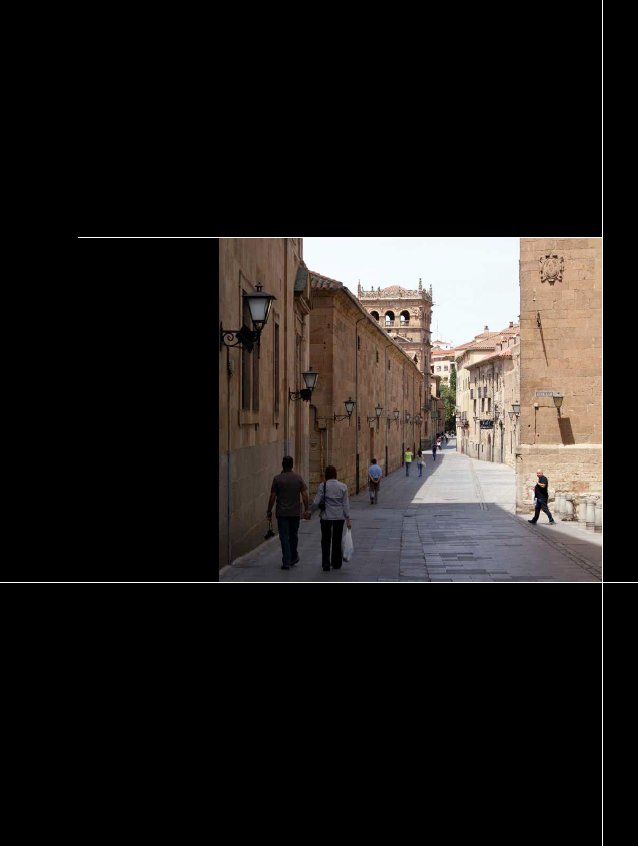Abstract
The famous Renaissance and Baroque architectural heritage of Salamanque is today an essential factor of its identity, recognized as a World Heritage Site by UNESCO in 1988. This recognition included the transformations of the 20th century and its medieval urban structure. The practice of architecture directed by Antonio Fernández Alba between 1958 and 1990 allows us to see the search for a balance between modernity and its revision in a historical center more shaped by the creation of a symbolic image than by the implementation of the effective value of its wealth as a content of authenticity. The case of Fernández Alba is also part of a broader reflection that supported the practice of architecture in historic centers: how to reconcile the uses and functions of modern life with the preservation of the historic center as a content of authenticity; Two attitudes often considered antagonistic?
Boletín oficial de la Castilla-y-León [B.O.C.Y.L.] (1986, novembre 21).
Boletín Oficial del Estado [B.O.E.] (1988, nov¬embre 24).
Boletín oficial de la Castilla y León [B.O.C.Y.L.] (2014, septembre 3). p.60747.
Boletín Oficial del Estado [BOE](2014, septembre 13). p.71883.
Capitel, A. (1986). Arquitectura española años 50 – años 80. Madrid: M.O.P.U.
Colegio Oficial de Arquitectos de Madrid [C.O.A.M.]. Servicio histórico FA/D025/C02-11. Expres¬sion d’une idéologie élevée. Mémoire.
Colegio Oficial de Arquitectos de Madrid [C.O.A.M.]. (1958, noviembre). Servicio histórico, FA/ P334/G5-1-03. Memoria descriptiva de la composición de fachada en la casa pro¬piedad de D. Manuel Gutiérrez y otros en Salamanque.
Colegio Oficial de Arquitectos de Madrid [C.O.A.M.]. (1963). Servicio histórico, FA/D041/C03-03. Memoria complementaria.
Colegio Oficial de Arquitectos de Madrid [C.O.A.M.]. (1963, febrero). Servicio histórico., FA/D041/ C03-01. Memoria.
Colegio Oficial de Arquitectos de Madrid [C.O.A.M]. (1965, mars). Servicio histórico, FA/D039/ C03-2. Memoria adicional al proyecto.
Colegio Oficial de Arquitectos de Madrid [C.O.A.M.]. (1969, octubre). Servicio histórico, FA/D188/ C08-02. Memoria anteproyecto de colegio mayor en Salamanque.
Colegio Oficial de Arquitectos de Madrid [C.O.A.M.]. (1970, octubre). Servicio histórico, FA/D093/ C07-02. Memoria.
Fernández Alba, A. (1959). Necesidades de una reforma urbanística en Salamanque. Gaceta Regional, 21.
Fernández Alba, A. (1960). Edificio destinado a viviendas y oficinas en Salamanque. Arqui¬tectura, 11(129).
Fernández Alba, A. (1960). Viviendas y garaje en Salamanque. Arquitectura, (18), 32 – 36.
Fernández Alba, A. (1986). Diagnóstico de una situación. Salamanque. Abandono y des¬trucción de un Patrimonio Arquitectónico. En A. Fernández Alba et C. Gaviria, Crónicas del espacio perdido. La destrucción de la ciudad en España 1960-1980, (pp. 27-38). Madrid : Centro de publicaciones, Secretaria General Técnica, Ministerio de Obras Públicas y Urbanismo. Récuperé de http://oa.upm. es/23246/4/Cronicas_Espacio_Perdido.pdf
Fernández Alba, A. (1970). Colegio Mayor de Oviedo, 1969. Nueva Forma, (56), 53-56.
Fernández Alba, A. (1986). Fernández Alba, A. (1986). La destrucción de la ciudad en Espa¬ña. En A. Fernández Alba et C. Gaviria, Cró¬nicas del espacio perdido. La destrucción de la ciudad en España 1960-1980, (pp. 10-24). Madrid: Centro de publicaciones, Secretaria General Técnica, Ministerio de Obras Públicas y Urbanismo. Récuperé de http://oa.upm. es/23246/4/Cronicas_Espacio_Perdido.pdf
Fernández Alba, A. (1970). Diagnóstico de una situación; Salamanca. (Abandono y des¬trucción de un Patrimonio Arquitectónico) Centro del Restauro. Roma , in Crónicas del espacio perdido, op. cit., pp. 27-38.
Fernández Alba, A. (1993). Noticia de las obras de restauración y consolidación de la Real Clere¬cía de S. Marcos en Salamanque. Madrid: Co¬legio Oficial de Aparejadores y Arquitectos.
Fernández Alba, A. (2011). Premio Nacional de Ar¬quitectura 2003: libro de fábricas y visiones recogido del imaginario de un arquitecto fin de siglo 1957-2010. . Madrid: Ministerio de Obras Públicas y Urbanismo.
Kent, C. (2005). El perfil de Salamanque. Historia fotográfica de una seña de identidad”. Sala¬manque: Junta de Castilla y León.
Pulin Moreno, F. (1976). La nueva edificación en los barrios históricos. Arquitectura, (201), 57-61.
Nuñez Izquierdo, S. (2014). El arquitecto Francisco Gil González (1905-1962) y la arquitectura salmantina del segundo tercio del siglo XX. Salamanque: Ediciones Université de Salamanque.
Nuñez Paz, P., Redero Gómez, P., et García, J. V. (2001). Salamanque. Guía de Arquitectura, 74-75.
Apuntes is registered under a Creative Commons Attribution 4.0 International Public License. Thus, this work may be reproduced, distributed, and publicly shared in digital format, as long as the names of the authors and Pontificia Universidad Javeriana are acknowledged. Others are allowed to quote, adapt, transform, auto-archive, republish, and create based on this material, for any purpose (even commercial ones), provided the authorship is duly acknowledged, a link to the original work is provided, and it is specified if changes have been made. Pontificia Universidad Javeriana does not hold the rights of published works and the authors are solely responsible for the contents of their works; they keep the moral, intellectual, privacy, and publicity rights.
Approving the intervention of the work (review, copy-editing, translation, layout) and the following outreach, are granted through an use license and not through an assignment of rights. This means the journal and Pontificia Universidad Javeriana cannot be held responsible for any ethical malpractice by the authors. As a consequence of the protection granted by the use license, the journal is not required to publish recantations or modify information already published, unless the errata stems from the editorial management process. Publishing contents in this journal does not generate royalties for contributors.



